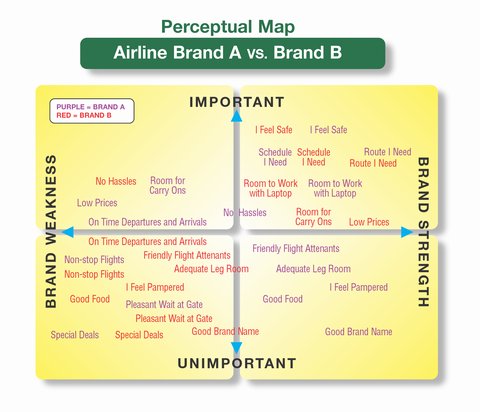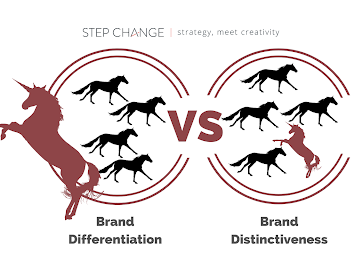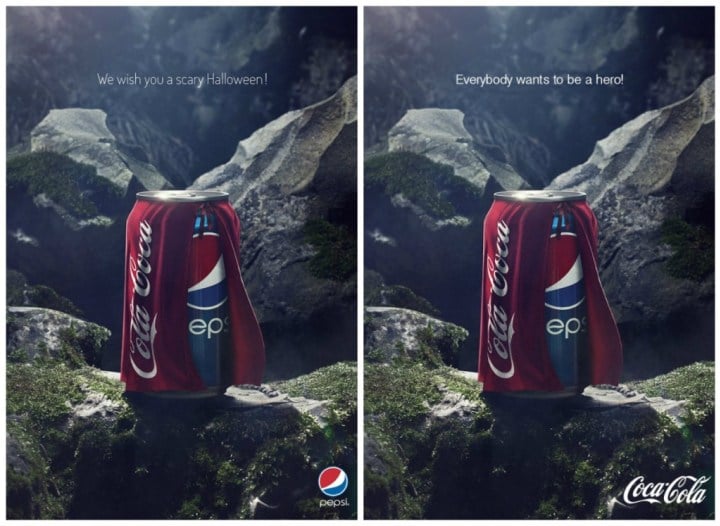Are you proactively influencing how your target audience sees your brand in relation to all the other options available to them (a.k.a your competitors)?
Insight: Consumers’ minds is a cluttered battlefield.
Data: With the average consumer is exposed to 5,000 branded messages a day, brands are typically competing for their attention.
Key Action Point: You need to identify your brand positioning to own a space in the customer’s mind.
What’s Brand Positioning, and Why Should You Care?
Brand positioning is about defining that single rung in your customers’ minds, in the category (the ladder) that you belong.
This very persuasive thought in the customers’ mind must be —
- True to you
- Relevant to your audience
- Must make it difficult for your competition to compete
Why is this so important in the modern marketplace?
You need brand positioning to maximise business revenues. The modern consumer has more choice than ever before. Without it, products are less visible to the target audience. That visibility leads to better marketing ROI, which has the potential to improve profit margins as well as total revenues.
There are other great benefits to positioning your brand:
- Higher rates of customer loyalty
- A lower cost of acquisition
- Greater top of mind retention from first responders
For example, 89% of marketers surveyed by the Content Marketing Institution stated that brand awareness is the single most important factor in a marketing campaign, followed closely by lead generation, and sales.
OnBrand found that audience building is actually more important than direct sales to 70% of marketing managers surveyed. Why? That audience represents exponentially more sales down the road.
What’s Your Brand Positioning?
The way to find the brand positioning that’s right for you is to consider the dominant positioning territories. We’ve compiled 23 of the world’s best and most effective positioning territories. Which one’s right for you and your brand?

Determining Your Brand Positioning through a Positioning Map

Source: Branding Strategy Insider
Your positioning map gives a visual representation to the most important aspects of your branding efforts and where you stand in delivering those characteristics to your target audience as compared to your competition.
Start your map by dividing a 2x2 matrix along an X–Y axis. The X axis ranges from “Brand Weakness” to “Brand Strength” while the Y axis ranges from “Unimportant” at the bottom to “Important” at the top.
Place all your branding characteristics on the matrix according to how important that attribute is to your company and how strong you are at accomplishing it.
To get a relative sense of where you stand, it is good to compare your brand to a market leader. For instance, if customer service is more important to your brand, but the market leader delivers on customer service twice as well, you will know to place your “Customer Service” marker higher and more to the left of the competition's “Customer Service” marker.
Brand Positioning Examples
Let's take a look at some of the most famous examples of brand positioning in the modern market.
Gillette vs Dollar Shave Club

Gillette is all about innovator positioning, even to the extent of cannibalising its own products. The brand often competes with itself when it rolls out a new technology. Fortunately, it has the backing of its enormous parent company, P&G.
Gillette is far from the cheapest company, and it often prices its new offerings over its old ones as it upgrades. However, its newer products are created to have higher profit margins per unit sold, which makes cannabalisation a good thing for the brand.
Case in point: Gillette had absolutely no problem showcasing its own Mach 3 razor as inferior to its new offering Fusion, even producing commercials featuring famous athletes knocking Mach 3 razors out of people’s hands.
On the other hand, Dollar Shave Club is all about price positioning. Its profits come from high volume sales on a wide variety of products.
Although it sells some products in the same line as others, it does not cannibalise itself. Dollar Shave Club also spends a great deal of money on humorous ads that showcase the brand as a lighthearted but trustworthy distribution hub.
Simple vs Bank of America

After the financial crisis of 2008, Bank of America was desperate to find ways to build back trust with its customers. For the next few years, they marketed themselves as the “bank of integrity.”
Recently, a new CMO hire brought in the next phase of BofA's long-term marketing strategy. The bank is now promoting the simple but poignant phrase “making financial lives better.”
Contrast this with Simple, a smaller brand with less resources than the massive Bank of America. There is no way that Simple could compete with BofA on services, so it focused its positioning on ease of use.
If you want convenient, fast banking, Simple is your brand. For a more sophisticated, long-term financial strategy, BofA may be the superior choice.
Conclusion
As you can see, brand positioning is an essential part for any company looking to build or grow market share. To stand out and be noticed by the people that matter to your business, you need to start thinking about occupying a territory, a rung, in the minds of your target customers.








![Top 10 Articles C-Suites Read in the Step Change Blog [2019 Edition]](https://blog.hellostepchange.com/hubfs/step-change-top-10-articles-2019.001.jpeg)






